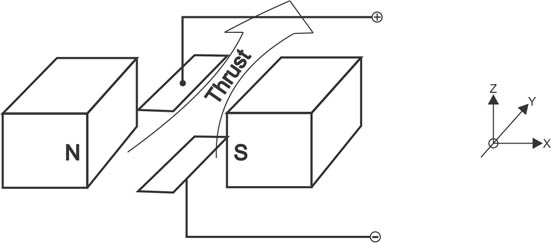Figure 5 shows the basic MHD propulsion system. It is similar to the MHD generator. The main difference is that instead of drawing electricity via the electrodes, electricity is supplied to flow between the elctrodes. The electrified sea water, being under a strong magnetic field, is propelled perpendicular to the magnetic and electric fields.

MHD Propulsion In Space
MHD propulsion systemsseem to be ideally suited for interplanetary space travel. MHD rockets could not replace chemical rockets for the raw power needed to escape Earth's gravitational field because of the MHD's low specific thrust. However, once lifted in space the MHD propulsion system can easily surpass and speed past chemical rockets in travelling to other planets.
The reasons are that despite their low thrust, the MHDs use very little fuel, and the exhaust velocity of the propellant is very high. Combine these two properties and you have a rocket engine that canrun contonuously for a long perodof time that will allow the vessel to slowly gather to high speed. Remember Newton's law of motion, for every action there is an equal and opposite reaction. With chemical rockets, regardless of how powerful the thrust is, the rocket can go no faster than the exhaust velocity of its propellant.
The MHD space drive looks like the illustration in Figure 5. The difference is that an ionized has is released in the MHD chamber. The ionized gas is accelerated due to the electric and magnetic fields and produces thrust, in the same manner as described for the sea water MHD propulsion.
Parts List
| Item | Source |
| Large Bar Magnet 1" x 1" x 2" | Images Company |
| Steel Plate 1" x 4.5" x 1/16" thick | Images Company |
| Potasium Nitrate 1/2 oz. | Images Company |
| Wick | Images Company |
| Propane or Butane Torch | Purchase Locally |

